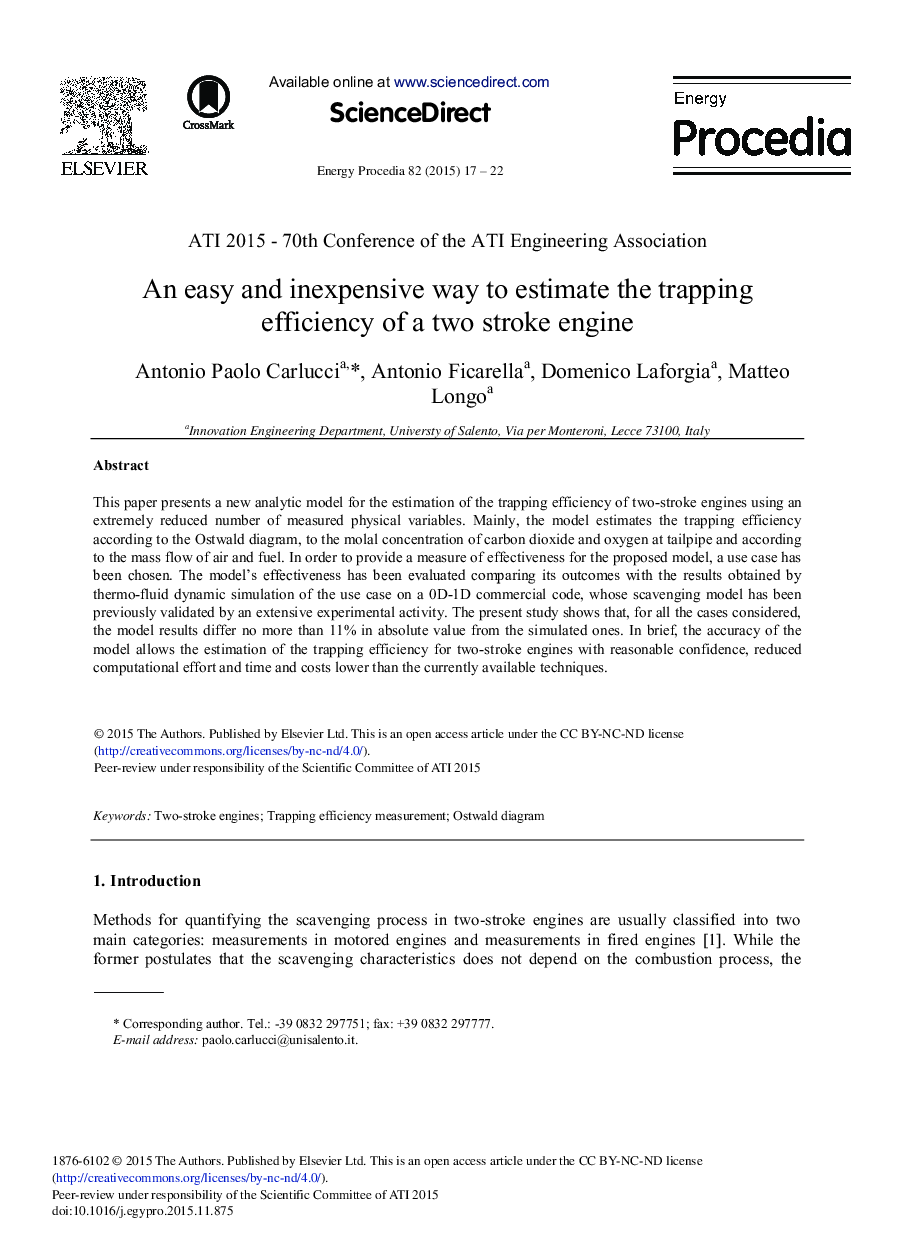| Article ID | Journal | Published Year | Pages | File Type |
|---|---|---|---|---|
| 1509033 | Energy Procedia | 2015 | 6 Pages |
This paper presents a new analytic model for the estimation of the trapping efficiency of two-stroke engines using an extremely reduced number of measured physical variables. Mainly, the model estimates the trapping efficiency according to the Ostwald diagram, to the molal concentration of carbon dioxide and oxygen at tailpipe and according to the mass flow of air and fuel. In order to provide a measure of effectiveness for the proposed model, a use case has been chosen. The model's effectiveness has been evaluated comparing its outcomes with the results obtained by thermo-fluid dynamic simulation of the use case on a 0D-1D commercial code, whose scavenging model has been previously validated by an extensive experimental activity. The present study shows that, for all the cases considered, the model results differ no more than 11% in absolute value from the simulated ones. In brief, the accuracy of the model allows the estimation of the trapping efficiency for two-stroke engines with reasonable confidence, reduced computational effort and time and costs lower than the currently available techniques.
